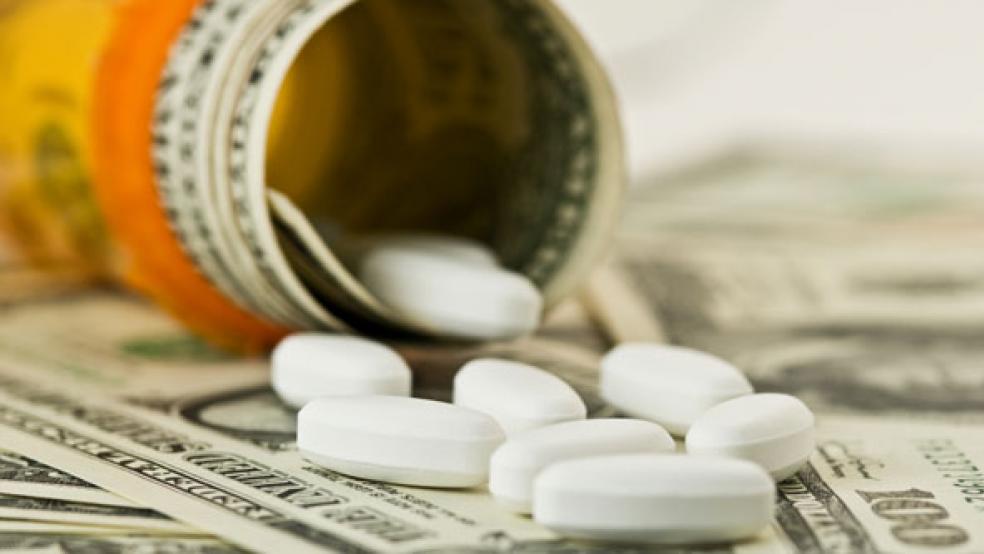It’s no secret that Americans have long spent far more on prescription drugs, on average, than consumers in most other industrialized countries.
Per capita prescription drug spending in the United States, particularly for costly brand names, was $858 in 2013, compared with an average of just $400 for 19 other industrialized nations, according to the Organisation for Economic Cooperation and Development (OECD). And list prices for the 20 highest grossing drugs were on average three times higher in the U.S. than in Great Britain, even with rebates and other discounts provided American consumers.
Related: Ignoring Warnings, Drug Companies Hike Prices By 10 Percent
The recent astronomical surge in the domestic prices of vitally needed cancer, heart and Hepatitis-C virus medicines — and even EpiPens for children’s allergic reactions — has mobilized public resentment and led to congressional investigations into rampant price gouging.
Despite the growing call for a more sane and reasonable prescription drug pricing policies, a new study by three Harvard academics and medical doctors concludes that a leveling of U.S. prescription drug spending will remain very much out of reach under current government policies, which in some cases were dictated by the influential pharmaceutical industry.
The lengthy study by Aaron S. Kesselheim, Jerry Avorn and Ameet Sarpatwari, published Tuesday in JAMA, the journal of the American Medical Association, was based on peer-reviewed medical and health policy literature between 2005 and July 2016. Their study cites two big reasons why the U.S. is trapped in a cycle of ever-escalating prescription drug costs, with no end in sight:
The most important factor is the drug industry’s built-in monopoly in the marketing of drugs, especially the latest generation of wonder drugs that can often mean the difference between the life and death of a patient. Major drug companies are able to set often ridiculously high drug prices because of the market exclusivity granted them by the Food and Drug Administration and long-term patents and trademarks that thwart potential competitors.
Related: Extreme Rise in Some Drug Prices Reaches a Tipping Point
“Although brand-name drugs comprise only 10% of all dispensed prescriptions in the United States, they account for 72% of drug spending,” the report notes. “Between 2008 and 2015, prices for most commonly used brand-named drugs increased 164%, far in excess of the consumer price index” of 12%. The annual cost of a growing number of “specialty drugs,” including injectable biologic medications, went through the roof.
The report noted that the availability of [cheaper] generic drugs after this exclusivity period presents the best opportunity of reducing prices. However, access to those markets “may be delayed by numerous business and legal strategies,” according to the study.
The primary counterweight to excessive drug prices is hard-boiled bargaining by government payers and private health insurance groups that represent huge numbers of beneficiaries and consumers. While many private prescription drug providers and insurers regularly cut deals with pharmaceutical companies for discounts and other breaks, that’s not always the case with the federal government.
Medicare, the health program for seniors, covers about 40 million adults for outpatient and inpatient drug costs and it accounts for 29 percent of the nation’s prescription drug expenditures. Yet “federal law prevents it from leveraging its considerable purchasing power to secure lower drug prices while requiring it to provide broad coverage, including all products in some therapeutic categories, such as oncology,” the study states.
Related: Epi-Pen Maker Enters the Pharmaceutical Industry’s Hall of Shame
Congress handcuffed the government in 2003 by including a provision in the Medicare Part D drug program explicitly prohibiting the Centers for Medicare and Medicaid Services from interfering with negotiations between individual Part D vendors and drug companies. That measure — sought and obtained by pharmaceutical industry lobbyists from former Republican President George W. Bush — effectively prevents CMS from negotiating or setting prices, like national health care programs do in many other countries.
State Medicaid programs for the poor and some other major federal agencies including the Veterans Health Administration are entitled to receive rebates from drug companies of roughly 24 percent. But overall, the federal government is in a weakened position to demand lower drug prices from major manufacturers. Even in the private sector, where major health insurers and prescription drug distributors have more leeway to wheel and deal, “aggressive price negotiation is not the norm,” according to the study.
Related: As Valeant’s CEO Apologizes, the Rest of the Industry Keeps Hiking Drug Prices
The study concludes on a hopeful note by saying that this situation may change, “as drug prices increase, particularly for widely used products, and as drug spending consumes a greater share of health budgets.”




